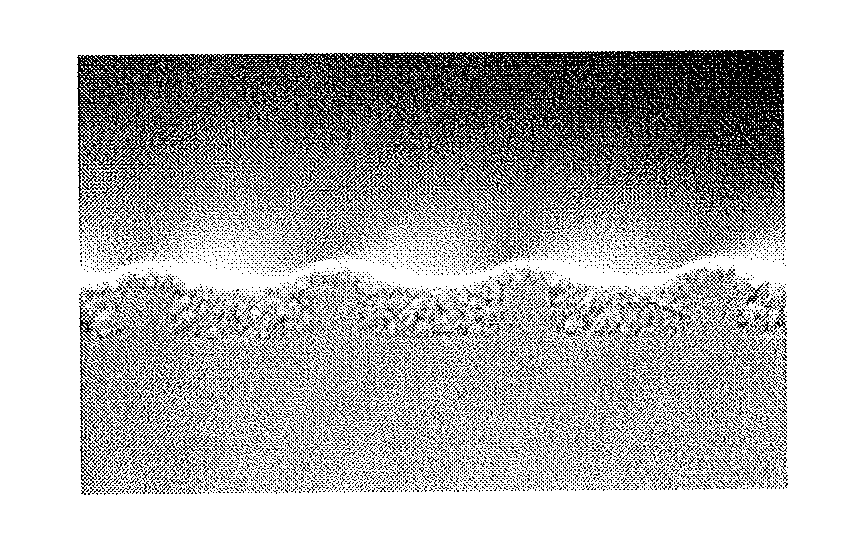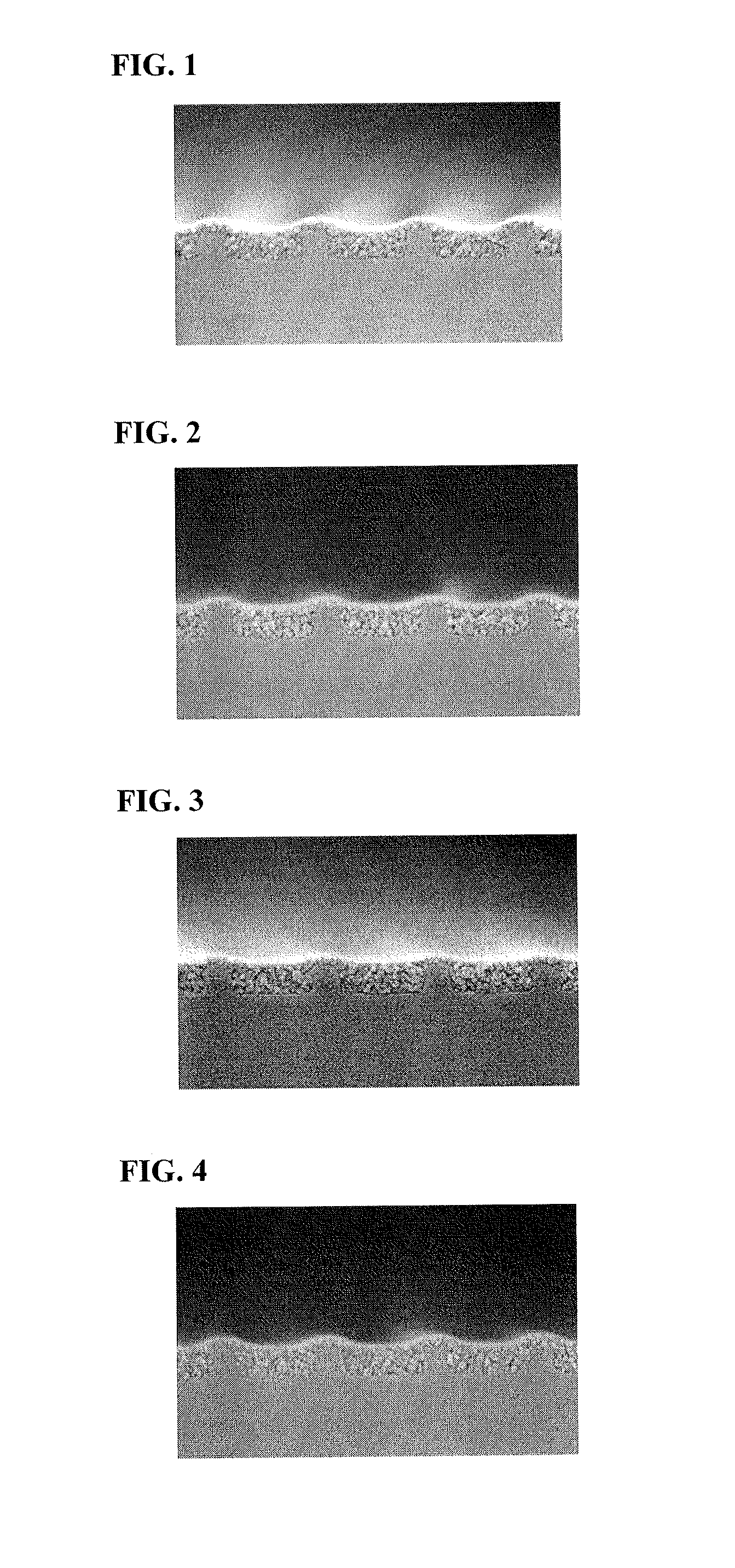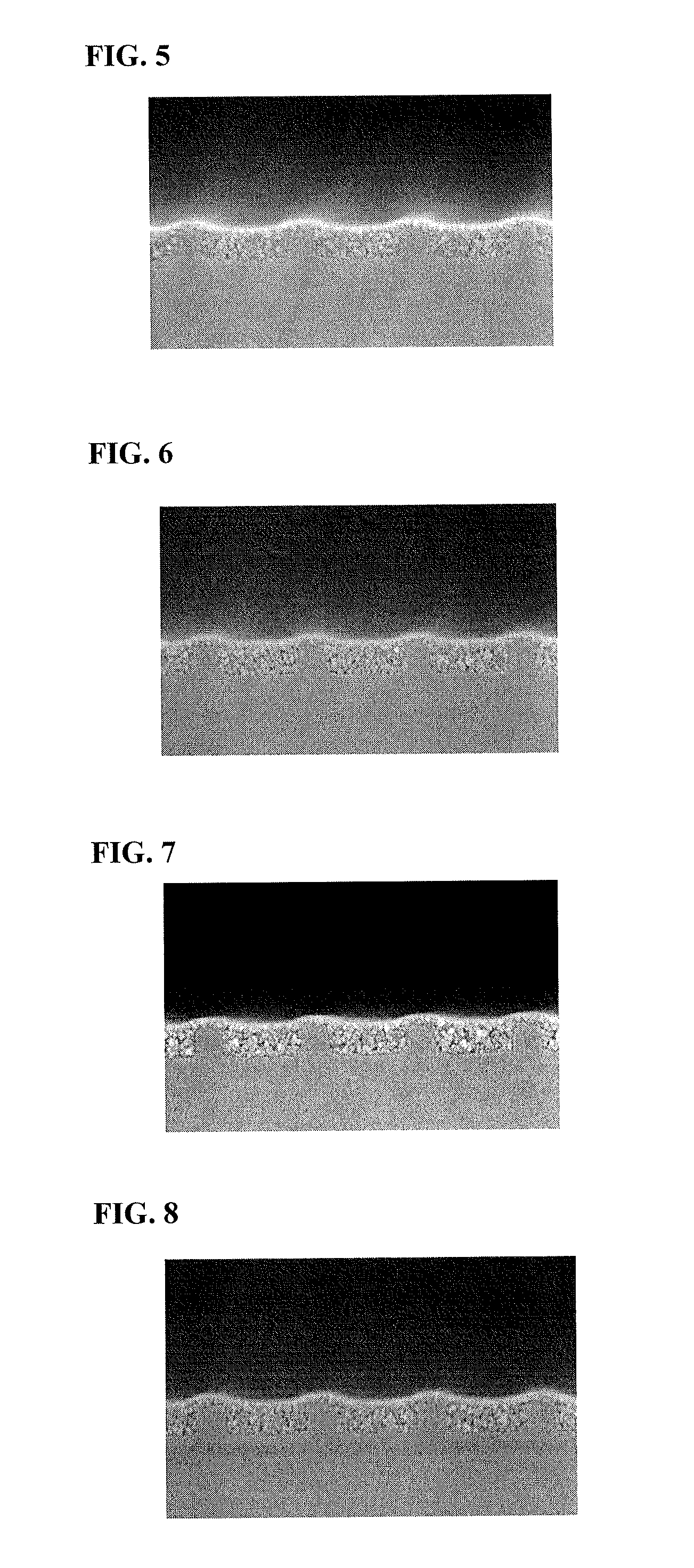Resist underlayer film forming composition that contains novolac resin having polynuclear phenol
a technology of novolac resin and film forming composition, which is applied in the direction of photomechanical equipment, instruments, organic chemistry, etc., can solve the problems of hindering the formation of desired pattern formation during semiconductor substrate fabrication, significant influence, and the need for thinner resists, so as to achieve easy and precise formation of resist patterns, high dry etching resistance, and sufficient etching resistance
- Summary
- Abstract
- Description
- Claims
- Application Information
AI Technical Summary
Benefits of technology
Problems solved by technology
Method used
Image
Examples
synthesis example 1
[0114]20.79 g of propylene glycol monomethyl ether was added to 8.65 g of 1,1,2,2-tetrakis(4-hydroxyphenyl)ethane (product name: TEP-DF, manufactured by Asahi Organic Chemicals Industry Co., Ltd.), 5.00 g of 1-pyrenecarboxyaldehyde (manufactured by Maruzen Chemical Industries, Ltd.), and 0.21 g of methanesulfonic acid, and this mixture was stirred under reflux for 23 hours in nitrogen atmosphere. After the reaction was completed, this solution was diluted with 35 g of tetrahydrofuran. This diluted solution was subjected to reprecipitation in a mixed solvent of methanol / water (50% by mass / 50% by mass). The obtained precipitate was filtered, and the residue was washed and then dried under reduced pressure at 60° C., whereby 9.4 g of a novolac resin was obtained (including the polymer of Formula (8-1)). The weight-average molecular weight measured in terms of standard polystyrene by GPC was 3,600.
synthesis example 2
[0115]20.02 g of propylene glycol monomethyl ether was added to 6.06 g of 1,1,2,2-tetrakis(4-hydroxyphenyl)ethane (product name: TEP-DF, manufactured by Asahi Organic Chemicals Industry Co., Ltd.), 7.00 g of 1-pyrenecarboxyaldehyde (manufactured by Maruzen Chemical Industries, Ltd.), and 0.29 g of methanesulfonic acid, and this mixture was stirred under reflux for 23 hours in nitrogen atmosphere. After the reaction was completed, this solution was diluted with 20 g of tetrahydrofuran. This diluted solution was subjected to reprecipitation in a mixed solvent of methanol / water (80% by mass / 20% by mass). The obtained precipitate was filtered, and the residue was washed and then dried under reduced pressure at 60° C., whereby 9.1 g of a novolac resin was obtained (including the polymer of Formula (8-20)). The weight-average molecular weight measured in terms of standard polystyrene by GPC was 4,800.
synthesis example 3
[0116]19.90 g of propylene glycol monomethyl ether was added to 3.89 g of 1,1,2,2-tetrakis(4-hydroxyphenyl)ethane (product name: TEP-DF, manufactured by Asahi Organic Chemicals Industry Co., Ltd.), 9.00 g of 1-pyrenecarboxyaldehyde (manufactured by Maruzen Chemical Industries, Ltd.), and 0.38 g of methanesulfonic acid, and this mixture was stirred under reflux for 23 hours in nitrogen atmosphere. After the reaction was completed, this solution was diluted with 20 g of tetrahydrofuran. This diluted solution was subjected to reprecipitation in a mixed solvent of methanol / water (80% by mass / 20% by mass). The obtained precipitate was filtered, and the residue was washed and then dried under reduced pressure at 60° C., whereby 11.2 g of a novolac resin was obtained (including the polymer of Formula (8-22)). The weight-average molecular weight measured in terms of standard polystyrene by GPC was 5,700.
PUM
| Property | Measurement | Unit |
|---|---|---|
| temperature | aaaaa | aaaaa |
| temperature | aaaaa | aaaaa |
| thickness | aaaaa | aaaaa |
Abstract
Description
Claims
Application Information
 Login to View More
Login to View More - R&D
- Intellectual Property
- Life Sciences
- Materials
- Tech Scout
- Unparalleled Data Quality
- Higher Quality Content
- 60% Fewer Hallucinations
Browse by: Latest US Patents, China's latest patents, Technical Efficacy Thesaurus, Application Domain, Technology Topic, Popular Technical Reports.
© 2025 PatSnap. All rights reserved.Legal|Privacy policy|Modern Slavery Act Transparency Statement|Sitemap|About US| Contact US: help@patsnap.com



